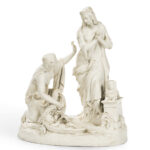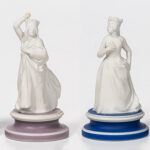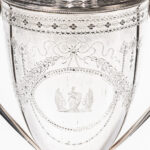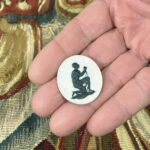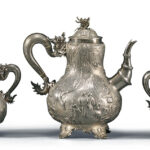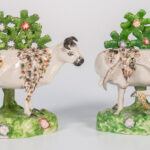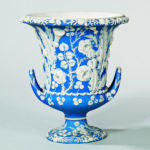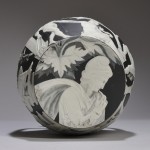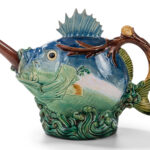
Majolica’s birth to the World in 1851 at an exhibition held at London’s Crystal Palace is credited to the Frenchman Léon Arnoux and his work at Minton. It is defined by its rich use of lead glazed enamel colors combined with its strong modeling in the Victorian taste. Certainly, inspired by their Renaissance predecessors though fundamentally different than the earlier tin glazed earthenware.
Minton was a firm at the forefront of manufacture along with Wedgwood, George Jones, Joseph Holdcroft, Thomas Forester, and numerous others.… Read More


